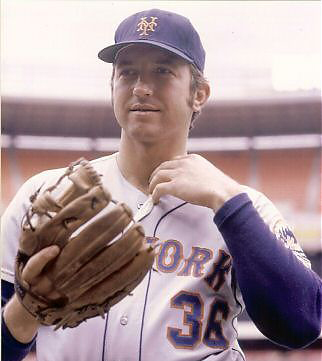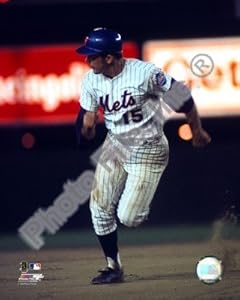Imagine you’re a Mets fan waking up on the morning October
22nd 1973. Sure, your favorite team just lost in seven heartbreaking
games to the Oakland A’s, but the A’s are a powerhouse, and an 82 win Mets team
took them to the limit. 1973 was a wild ride: the Harrelson/Rose fight,knocking off a 99 win Reds squad in a 5 games NLCS, storming back from being 12 games under .500 on August 16th, 9 games out heading
into September, a rash of injuries, and Ya Gotta Believe, yeah Ya Gotta
Believe.
So as a Mets fan, you enter the 1973 offseason bloodied but
unbowed. You’re confident that with a couple additions like a power bat at 3B
and an upgrade in CF, a healthy Jerry Grote, Cleon Jones, and Buddy Harrelson
adding to the core of Rusty Staub, John Milner, and Felix Millan, not to
mention the top shelf rotation of Seaver, Matlack, Koosman and Stone-1974 could
be “the year.”
Even though you’re five years removed from the ’69 Miracle Mets,
on the whole the team is still fairly young.
1b-John Milner 24
2b-Felix Millan 30
SS-Buddy Harrelson 31
3b-Wayne Garrett 26
LF-Cleon Jones 31
CF-Don Hahn 25
RF-Rusty Staub 30
C-Jerry Grote 31
Rotation:
P-Tom Seaver 30
P-Jon Matlack 24
P-Jerry Koosman 31
P-George Stone 27
 Since it’s 1973 Free
Agency or Arbitration doesn’t exist because you’re in the waning years of the
reserve clause era. Players are essentially owned by their team and sign one
year contracts, with terms of said contract made by that team’s owner and GM.
Since it’s 1973 Free
Agency or Arbitration doesn’t exist because you’re in the waning years of the
reserve clause era. Players are essentially owned by their team and sign one
year contracts, with terms of said contract made by that team’s owner and GM.
Fast forward to
December and the Winter Meetings have came and went with no additions to the
team. OK.so maybe you can live with Hahn in CF, he does have a strong glove,
and well Garrett goes back to the Miracle Mets so, ok, not perfect but maybe
something will happen before the New Year.
The only problem is
your competition in the NL East, namely the Pirates and Cardinals, were busy at
those meetings and beforehand. The Redbirds added Reggie Smith in October and
John Curtis as well as the highly touted young hurler Lynn McGlothen from the
Red Sox in two separate trades. “Smith, wow, he would’ve been a huge upgrade in
CF for us. Why didn’t we go after him?,” you probably would’ve asked yourself. You're also thinking that Hahn’s bat might come around and if not you do have Rich Chiles as well as Dave Schneck too. Heck they’re all under 25. One of
them will emerge.
As for their other
arch-rival? The 1973 Pirates endured the tragic death of Roberto Clemente, the
failed experiment of Manny Sanguillen in Right Field and the implosion of their
ace Steve Blass. To remedy this the Bucs put the misery of ’73 behind them by
bolstering their rotation with the additions of Ken Brett and Jerry Reuss from
the Phillies and Astro’s. They’re good pitchers but the Mets staff is still the
class of the division.
That pitching could be
enough too, especially if the starting nine perform up to their expectations.
“Hammer”
Milner smacked 23 roundtrippers with 74 ribbies last season. You’ve gotta
believe he has legit shot of 30 HR’s with 85-90 driven in this upcoming season.
At 2B, Millan really solidified the position, hitting .290 in ’73, and with everyone
healthy again he possibly could score 100 Runs and hit .300. Buddy’s the glue
of the team at SS, he just needs to stay healthy, and after two-injury plagued
years he’s due for a healthy one. If he can get close to what he was in 1971,
then that’s an All-Star SS right there. It would’ve been great to have upgraded
at the hot corner, it’s been a problem for way too many years now. But maybe
Garrett’s finally figured it out. He’s shaky with the glove but you can’t argue
with 16 longballs. That’s the most from a Mets 3B since Charley Smith knocked
16 out of the park way back in 1965. Wayne should hit 20 this year.
A healthy Rusty Staub in
RF made a huge contribution to the pennant winners. His power’s dipped
 some,
but he’s still only a few seasons removed from hitting 30 HRs. CF seems to be a
glaring weakness. The “Say Hey Kid” has retired and now Don Hahn has the
position all to himself. Smith, among others would’ve been a great addition here.
But Hahn’s slick with the glove and that can never be undervalued.-especially
on a pitching dependent team like the Mets. Like Harrelson, a healthy Cleon
Jones is crucial to a repeat pennant in 1974. He’s been bit by the injury bug
the past couple of seasons and like his Miracle Met teammate at SS, the LF is still
in his prime at 31 and should stay healthy, bouncing back to around his 1971
numbers.
some,
but he’s still only a few seasons removed from hitting 30 HRs. CF seems to be a
glaring weakness. The “Say Hey Kid” has retired and now Don Hahn has the
position all to himself. Smith, among others would’ve been a great addition here.
But Hahn’s slick with the glove and that can never be undervalued.-especially
on a pitching dependent team like the Mets. Like Harrelson, a healthy Cleon
Jones is crucial to a repeat pennant in 1974. He’s been bit by the injury bug
the past couple of seasons and like his Miracle Met teammate at SS, the LF is still
in his prime at 31 and should stay healthy, bouncing back to around his 1971
numbers.
Behind the plate it
would be great to get another 30-40 games out of the back-stop Jerry Grote. He’s
incredibly underrated, but keeping on the field has always been a challenge
since 1971 as well. Dyer needs to step it up behind him because this kid Hodges
looked good when he played last season.
As for the pitching,
nothing to worry about there, it’s easily the class of the division, and the
league as well. Possibly that team in the green and gold is the only one to
match the Mets starting four. All are capable of 20  wins: Seasver, Koosman, Matlack,
Stone.
wins: Seasver, Koosman, Matlack,
Stone.
 wins: Seasver, Koosman, Matlack,
Stone.
wins: Seasver, Koosman, Matlack,
Stone.
Parker and Sadecki do a nice
job when the team needs a 5th
starter but this kid Capra could challenge
and overtake them this coming
season. Adding him to the formidable four in front would make the Mets, even if
the hitters regressed, difficult to beat.
Tug had a weird season
but closed strong. He and the two swingmen mentioned above do a nice job of
supporting the starters, when they need it, out in the bullpen.
After coming so close
against a more talented A’s team. As a Mets fan you would’ve really had to like this team’s
chances of hoisting another pennant above Shea and possibly capturing their
first World Series ring since the Miracle Mets of ‘69. Much of the core of that
team is still in its prime, and having a healthy Jones, Harrelson, and Grote
will at the very least make taking the pennant away from the defending the 1973 champs a difficult task for the
powerful Pirates and pesky Cards.
As the
calendar turned to 1974, and winter turned to spring you would’ve been pretty
excited about the upcoming season. It held a lot of promise.
Unfortunately, it all unraveled quickly in 1974. The team stumbled to a 3-11 start and unlike the 1973 squad this one didn’t rebound. How bad was it? Their high water mark was 17-19 after back to back shutouts of the Expos. They finished 71-91.
1974 turned into the last hurrah for much of the’69 holdovers. That offesason the purge began with the trading of McGraw, Dyer, and Boswell. Jones and his “love van” was released early in ‘75. The window of opportunity for another ring for the ’69 crew was closing fast. After a promising 86 win season in 1976 and the disastrous Seaver trade it had slammed shut.


.jpg)





They had Milner, Millan, Jones and Staub.
ReplyDeleteWe have Wright, Murphy, Chris Young and ???
No matter how much pitching Alderson develops or adds, the fact remains that this team is not going to score a whole lot of runs without some major changes in personnel.
Excellent post
ReplyDeleteMack-Thank you, I appreciate it!
ReplyDeleteThe 1973 Mets won but 83 games and struggled most of the season, primarily because of injuries.
ReplyDeleteThat they won the East was due to the off-season of the perennial N.L. East champion Pirates.
The Mets front office was either deluding themselves in thinking the team could compete in 1974 without some improvements,
or too cheap to make them (probably both).
The glaring weakness on the team was Don Hahn, who while defensively skilled, could not hit.
The Mets were already carrying 2 players who were in there for defense exclusively (Harrelson and Grote), and could not afford a third non-offensive bat in the line-up.
Perhaps they were hoping George Theodore, a good RBI man in the minors, would get healthy and win the position.
But then The Stork was an unproven commodity at the major league level.
One of the edges the '69 team had over the '73 team was Tommie Agee, whose offense, speed, and glove were sorely missing in 1973.
A top shelf centerfielder should have been the off-season priority.
However, that would not have put the Mets in contention in 1974.
Seaver's health problems, George Stone's career ending injuries, the poor performance of Tug McGraw, and Wayne Garret's return to offensive mediocrity doomed the Mets.
The Mets would make moves to bolster their outfield before the 1975 season, with the acquisitions of Del Unser and Dave Kingman, as well as find an alternate to Garret in Joe Torre, but the moves, especially the outfielders, were a year too late.